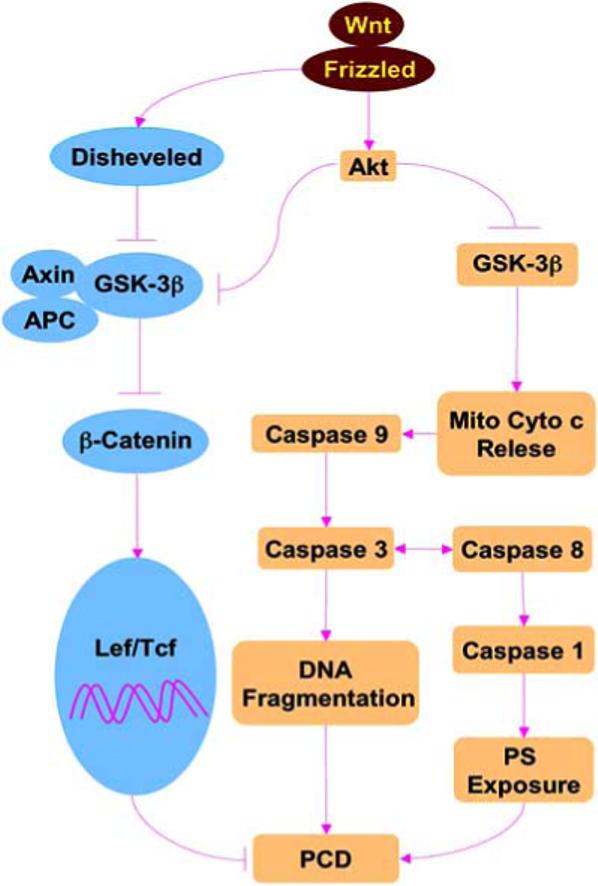Fig. (1). The Wnt pathway controls mitochondrial cytochrome c release, caspase activity, and programmed cell death (PCD).

The Wnt protein binds to its Frizzled receptors activating Dishevelled followed by the inhibition of GSK-3β (glycogen synthase kinase-3β), Axin and APC (adenomatous polyposis coli) tumor suppressor protein complex. The GSK-3β, Axin and APC complex blocks phosphorylation of ß-catenin. β-catenin translocates to the cell nucleus and contributes to the formation of Lef/Tcf (lymphocyte enhancer factor/T cell factor) and β-catenin complex that can lead to cellular proliferation, differentiation, and survival. The binding of Wnt to Frizzled receptors also can activate Akt that prevents the activity of GSK-3β, prevents Mito (mitochondrial) Cyto c (cytochrome c) release, caspase activity, and PCD that involves DNA fragmentation and phosphatidylserine (PS) exposure.
